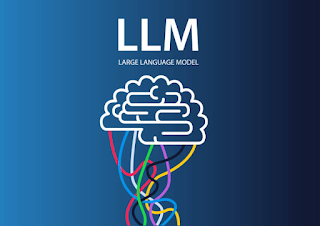TOPIC: Deep Learning, Transformers, Large Language Models in NLP & Paradigm Shifts in Linguistics
SUBTOPIC: Deep Learning, Transformers, Emergence of Large Language Models in Natural Language Processing, & Paradigm Shifts in Linguistics
Introduction:
Natural Language Processing (NLP) has experienced a transformative journey, propelled by advances in deep learning and the emergence of transformer models. This progress has not only changed how machines understand and produce human language, but it has also accelerated revolutionary advances in a variety of fields, including language translation, text summarization, sentiment analysis, and conversational agents. Among these advancements, Large Language Models (LLMs) have emerged as critical tools, demonstrating outstanding abilities in interpreting and producing natural language writing. In this piece, we'll go over the evolution of NLP, the critical role of deep learning and transformers, the diverse applications of LLMs, prompt engineering strategies, fine-tuning techniques, and the future trajectory of linguistics research in an era of LLMs.
Evolution of NLP and Deep Learning:
NLP has progressed from rule-based systems to statistical techniques, and now to the revolutionary atmosphere of deep learning. Deep learning, particularly neural networks, has considerably improved natural language processing and understanding by taking advantage of large datasets and hierarchical representations. This evolution has been accelerated by advances in neural network topologies, processing resources, and the availability of large datasets. Notably, deep learning approaches such as recurrent neural networks (RNNs), convolutional neural networks (CNNs), and, more recently, transformers have played critical roles in taking NLP tasks to new heights.
Transformers and the Rise of LLMs:
Vaswani et al.'s key work "Attention is All You Need" introduced transformers, which represented a paradigm change in NLP by adeptly capturing long-range dependencies and contextual nuances. Transformer-based models, such as BERT (Bidirectional Encoder Representations from Transformers) and GPT (Generative Pre-trained Transformer), have emerged as the de facto standards in a variety of NLP benchmarks. LLMs, particularly those illustrated by GPT-3, have demonstrated exceptional proficiency in interpreting and producing coherent natural language text, outperforming prior standards in tasks ranging from text completion to question answering and language translation.
Applications of LLMs and Prompt Engineering:
LLMs have permeated across other fields, including content generation, chatbots, language translation, and sentiment analysis. Effective use of LLMs requires skilled prompt engineering, which comprises creating accurate input prompts to elicit desired answers from the model. By providing informational and contextually appropriate instructions, users can direct LLMs to produce outputs that are associated with certain objectives or tasks. Mastering quick engineering is critical for improving LLM performance across multiple applications while also maintaining the fidelity and coherence of generated outputs.
Conclusion:
The introduction of deep learning and transformer-based models, particularly LLMs, has catapulted NLP into a new era of unparalleled invention and practical application. These developments have not only increased the effectiveness of NLP systems but have also triggered a paradigm shift in linguistics and computational linguistics research. Looking ahead, continued research and integration of LLMs into real-world applications are expected to generate additional advances in NLP, closing the gap between human language and machine understanding.
Reference:
Vaswani, A., Shazeer, N., Parmar, N., Uszkoreit, J., Jones, L., Gomez, A. N., Kaiser, Ł., & Polosukhin, I. (2017). Attention Is All You Need. In Proceedings of the 31st Conference on Neural Information Processing Systems (NIPS 2017), Long Beach, CA, USA.
Abstract: The most common sequence transduction models are built on large recurrent or convolutional neural networks, which include an encoder and a decoder. The best models use an attention mechanism to connect the encoder and decoder. We present a new basic network design, the Transformer, that is entirely based on attention mechanisms, with no recurrence or convolutions. Experiments on two machine translation tasks reveal that these models are higher in quality, more parallelizable, and need much less time to train. Our model scored 28.4 BLEU on the WMT 2014 English-to-German translation challenge, outperforming previous best results, including ensembles, by more than 2 BLEU. On the WMT 2014 English-to-French translation challenge, our model achieves a new single-model state-of-the-art BLEU score of 41.8 after 3.5 days of training on eight GPUs, at a quarter of the cost of the top models in the literature. We demonstrate that the Transformer generalizes well to different tasks by successfully applying it to English constituency parsing with both big and small training datasets.
Note: The authors contributed equally to this study. The sequence in which the listings appear is random. Jakob proposed replacing RNNs with self-attention and began evaluating the concept. Ashish, along with Illia, designed and executed the first Transformer models and has been heavily involved in all aspects of this project. Noam introduced scaled dot-product attention, multi-head attention, and parameter-free position representation, becoming the second person participating in almost every aspect. Niki created, developed, tweaked, and tested numerous model variants using our original codebase and tensor2tensor. Llion also worked with unique model variants, was in charge of our early coding, and developed efficient inference and visualization techniques. Lukasz and Aidan worked tirelessly to develop and implement tensor2tensor, which replaced our previous codebase, significantly improved findings and accelerated our study.
Conference: 31st Conference on Neural Information Processing Systems (NIPS 2017), Long Beach, CA, USA.
https://arxiv.org/pdf/1706.03762.pdf




